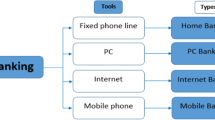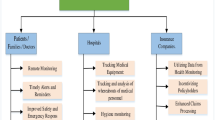Abstract
The development of the wireless communication allows all of the information to be saved in the digital storage device rapidly. Due to this, hacking and information leakage incidents are rapidly increasing. The scale of the problem however has gradually increased and the targeted industries have become much more diverse, which further points to the severity of the issue. Consequently, there are efforts to develop a security system in order to protect the information, yet at the same time the hacking technology has also advanced, causing an astronomical damage at an increasing state. This has led to the demand for a more convenient and cutting-edge enhanced security solutions. This demand has birthed the security authentication technology which merges biometrics and ICT capabilities. However, numerous biometrics technologies carry problems when deployed as means of security authentication solution for financial services due to their low level of recognition success rate, easy duplication, avoid recognition, terminal minimization difficulties and more. Finger vein recognition technology which is impossible to duplicate with a very high level of recognition rate has emerged as the biometrics authentication solution for financial services. This study recommended an authentication security model for financial services that use finger vein solution to strengthen financial services’ safety and to protect information.








Similar content being viewed by others
References
Park, J. S., Han, B. H., & Youn, H. J. (2015). FinTech in the security and FinTech in the settlement. Eugene investment and securities (in Korean).
Jung, J. H., Kim, J. Y., Lee, H. C., & Yi, J. H. (2013). Repackaging attack on android banking applications and its countermeasures. Wireless Personal Communications, 73, 1421–1437.
Alam, S., Chowdhury, M. M. R., & Noll, J. (2011). Interoperability of security-enabled internet of things. Wireless Personal Communications, 61, 567–586.
Durmus, Y., & Onur, E. (2015). Service knowledge discovery in smart machine networks. Wireless Personal Communications, 81, 1455–1480.
Ropponen, A., Rimminen, H., & Sepponen, R. (2014). Robust system for indoor localisation and identification for the health care environment. Wireless Personal Communications, 59, 57–71.
Park, J. H. (2012). A legal problem related to the use of biometrics. Kyung Hee Law Journal, 47(4), 401–440.
Lee, S. K. (2012). Next-generation identity authentication technology to replace the password. IDG Tech Report, IT World.
Jung, H. (2014). Present and future of the use of biometrics technology in the financial industry. KB Knowledge Vitamin, 6(2), 14–42.
Kim, H. K. (2015). Bio certification technology standard specification (draft), bio certification seminar enabled the Financial Sector. The Bank of Korea & KFTC.
Nar Technology. (2015). Solution proposals using finger vein for the financial settlement authentication and security. http://nartech.co.kr/upload/techboard_upload/catalog-2015nar.pdf.
Lee, J.-W., & Lee, B.-R. (2015). ROI extraction and enhancement for finger vein recognition. Journal of the Korea Institute of Information and Communication Engineering, 19(4), 948–953.
Kim, S.-M., Park, K. R., Park, D. K., & Chee, S. W. (2009). Fast detection of finger-vein region for finger-vein recognition. Journal of the Institute of Electronics and Information Engineers, 46, 23–31.
Jang, Y. K., Kang, B. J., & Park, K. R. (2008). A study on touchless finger vein recognition robust to the alignment and rotation of finger. The KIPS Transactions Part B, 4, 275–284.
Choi, H. S., & Park, G. T. (1998). A person identification algorithm and system utilizing hand vein pattern. Journal of the Research Institute of Industrial Technology, 17, 14–20.
Kim, H. S., & Cho, J. H. (2010). A method for finger-vein recognition using a new matching algorithm. Journal of KIISE Software and Applications, 37(11), 859–865.
Li, P., Xie, J., Liu, T., & Yan, W. (2014). Finger vein recognition algorithm based on optimized GHT. Optik, 125, 1780–1783.
Chunyi, L., Mingzhong, L. & Xiao, S. (2012). A finger vein recognition algorithm based on gradient correlation. In 2012 AASRI conference on computational intelligence and bioinformatics, AASRI Procedia 1 (pp. 40–45).
Miura, N., Nagasaka, A., & Miyatake, T. (2004). Feature extraction of finger-vein patterns based on repeated line tracking and its application to personal identification. Machine Vision and Applications, 15, 194–203.
Xie, S. J., Yoon, S., Yang, J. C., Lu, Y., Park, D. S., & Zhou, B. (2014). Feature component-based extreme learning machines for finger vein recognition. Cognitive Computation, 6, 446–461.
Omoron Korea co. Ltd. (2014). Apparatus and method for recognizing vein of finger. Korea patent no. 1354881.
Mok Po University, & Chon Buk National University. (2013). Method and apparatus for finger vein pattern extraction using guided Gabor filter. Korea patent no. 1315646.
Hitachi, Ltd. (2013). Personal identification device and method. United States patent no. US 8,582,831 B2.
Lee, B. D. (2015) Method for processing vascular enhancement of finger-vein image and the apparatus thereof. Korea patent application.
Acknowledgments
This work was supported by the Sun Moon University Research Grant of 2015.
Author information
Authors and Affiliations
Corresponding author
Rights and permissions
About this article
Cite this article
Noh, K.S. A Study on the Authentication and Security of Financial Settlement Using the Finger Vein Technology in Wireless Internet Environment. Wireless Pers Commun 89, 761–775 (2016). https://doi.org/10.1007/s11277-015-3116-5
Published:
Issue Date:
DOI: https://doi.org/10.1007/s11277-015-3116-5




